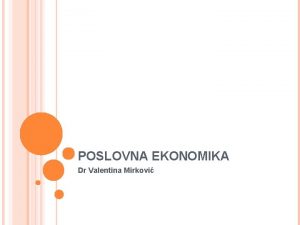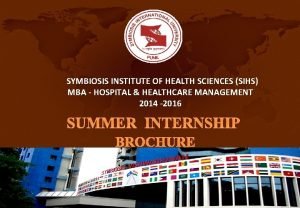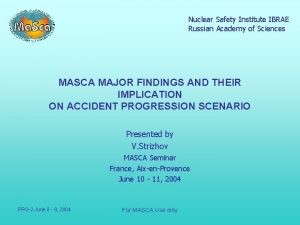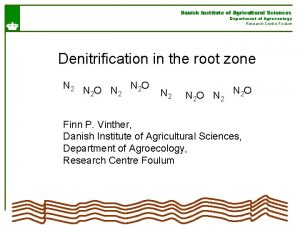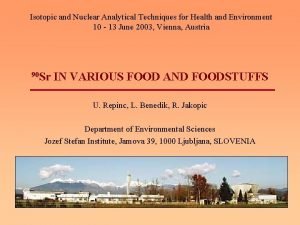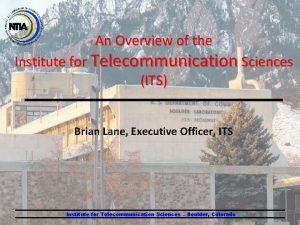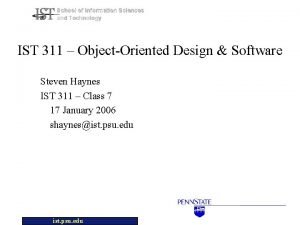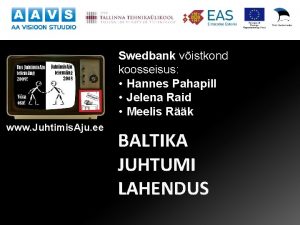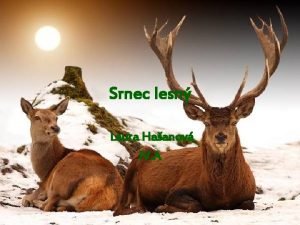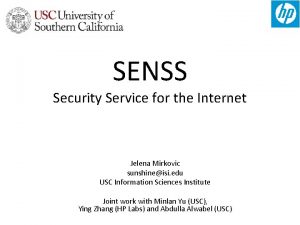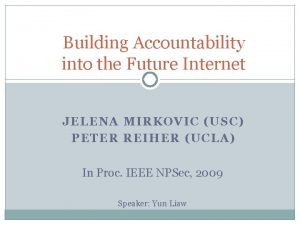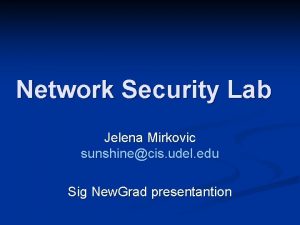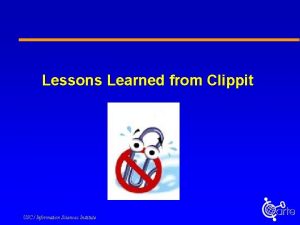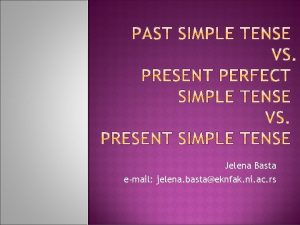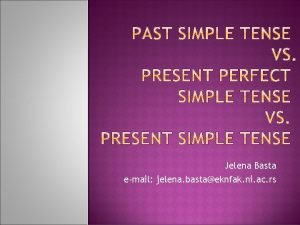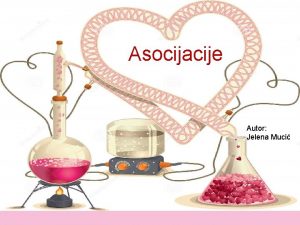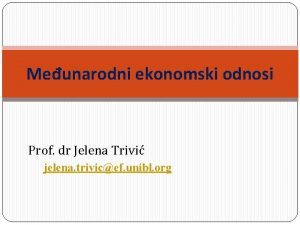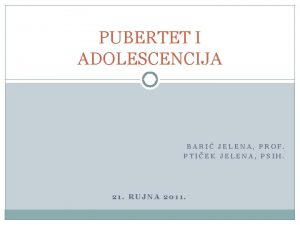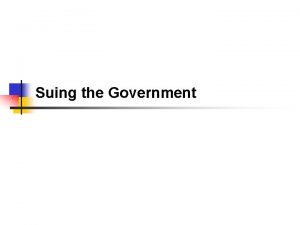INTERNET SIMULATOR Jelena Mirkovic USC Information Sciences Institute














- Slides: 14

INTERNET SIMULATOR Jelena Mirkovic USC Information Sciences Institute sunshine@isi. edu

MAIN IDEAS • • Two pieces of the puzzle – Internet map – different sources – Computational models – Simulation engine Open-source, modular – Users can replace pieces Simulation at customizable granularity – Speed vs scale, problem-dependent, zoom-in function My experience – Custom Internet simulators for IP spoofing and worm research 2

CASE 1: SPOOFING DEFENSE Evaluate all spoofing filtering defenses • These associate a source IP with some feature to detect spoofing – Previous hop, secret key, marks placed by routers … • Model the Internet, calculate number of all (source, target, spoofed address) that are filtered • No need to model attackss • That depends: – Many hosts may have the same previous hop to filter –route diversity, route changes and host distribution – Route depends on filter – [1] “Comparative Evaluationdiversity of Spoofing Defenses, ” J. Mirkovic and E. location Kissel, IEEE Transactions on Dependable andtopology Secure Computing, 2009. •

CASE 1: SPOOFING DEFENSE • • • How accurate must a model be? – Assuming random topology/routing/filter placement, uniform host distribution = extremely low effectiveness Realistic sources produce much better results 6 months for the eval framework, 3 more years to get the sources right - 6 x the overhead

CASE 2: WORM SIMULATION We wanted to study collaborative worm defenses: – When I’m infected I tell my friends what to filter • We decided to model the following in PAWS [2]: – Internet topology at the AS level – Conn. and AS size, routing – Log-normal distribution of vulnerable hosts – Worm-specific scanning strategy (RNG, scan size) – Limited link bandwidth (inter-AS, access) – Legitimate cross-traffic and its response to congestion (TCP) • This required lot of data collection/aggregation and guesswork - Especially for routing, host distribution, link bw and [2] “A Realistic Simulation of Internet-Scale Events, ” S. Wei and J. Mirkovic, Proc. of the Create-Net legitimate traffic International Conference on Performance Evaluation Methodologies and Tools (VALUETOOLS), • 2006.

CASE 2: WORM SIMULATION

CASE 2: WORM SIMULATION • How accurate must a model be? • Lessons learned from our experience: - 2 years to do the simulation right and the field has moved on – we never developed the worm defense

GOAL DEFINITION • • Internet map + simulator There’s a lot of data about the Internet – Multiple sources, multiple data types and resolutions We need a way to suck this data into ONE model of the Internet where user can select - “Age” of the Internet – time of data collection - Sources to be combined - What to do for missing data This model should either interface with popular simulators or be coupled with a simulator of its own - For this scale, the simulator must be distributed and its level of details must be customizable - Standardization of evaluation, easy portability

CHALLENGES • • - - Data about Internet is incomplete in each dimension – Each data source should have some way to estimate how far it is from reality and possibly compensate for it Data about Internet is huge - Distributed simulation - Emulation at this scale is too hard and unnecessary Missing data - Tolerate or guess? Users should choose - E. g. , extrapolate from existing data Anonymized data - Guess, users should choose how - E. g. , random guess, multiple trials

HOW TO SIMULATE? • Simulating only necessary events leads to great speedup: - In our work: 136 -CPU core running PDNS and GTNet. S matched with 8 common PCs - Fidelity/details are specific to research questions - May be able to come up with a standard for an area of research - Users must be able to customize this - Interaction between simulation and the model must also be specified

WHICH SIMULATOR? • • • ns-3 seems promising: - It’s better to start from a widely used simulator than to develop one from scratch - ns-3 corrects lots of deficiencies found in ns-2 - Easily extensible, detailed simulation of network events, lots of tools for post-processing Work needed: - Significant revision to support “variable granularity” simulations and Internet model interaction – must be able to drop pieces of code selectively - A separate, large chunk of code to model the Internet Downsides: - Two-language code base, sometimes hell to debug

WHERE DOES SIMULATOR RUN? • • Need a set of distributed machines: - Research testbeds such as Emulab and DETER seem like a good choice - Usually have shared file system, useful for initialization files - Usually have dedicated links between nodes of high capacity and low delay - Any institution can build its own mini-testbed, all code for this is open-source Each user needs his own copy of the code: - So he can customize it accordingly - There could be a centralized repository for the map where the most popular data sources are integrated

WHO’S GOING TO DEVELOP THIS? • • The core of the code should be developed by a single team: - Ability to create unified maps from disparate sources - Ability to selectively simulate events at chosen granularity - Interaction between the simulator and the map - Some straightforward “guesswork” techniques Customizations of map/simulator for specific problems should be contributed by the user community: - Open-source model, like ns-2 - Code contributed by experts for specific problems

THANK YOU I’d love to hear your questions and comments! Jelena Mirkovic, sunshine@isi. edu
 Ivan mirkovic math
Ivan mirkovic math Poslovna ekonomika
Poslovna ekonomika Olivera mirkovic
Olivera mirkovic Sara mirkovic
Sara mirkovic Human sciences vs natural sciences tok
Human sciences vs natural sciences tok Symbiosis institute of health sciences
Symbiosis institute of health sciences Nuclear safety institute of the russian academy of sciences
Nuclear safety institute of the russian academy of sciences Danish institute of agricultural sciences
Danish institute of agricultural sciences Health and environmental sciences institute
Health and environmental sciences institute Institute for telecommunication sciences
Institute for telecommunication sciences Kafue institute of health sciences
Kafue institute of health sciences Kafue institute of health sciences
Kafue institute of health sciences Ist 311
Ist 311 Jelena raid
Jelena raid Ruja jelena
Ruja jelena

